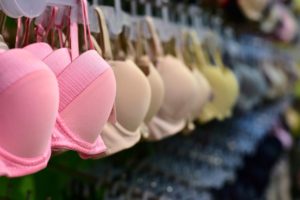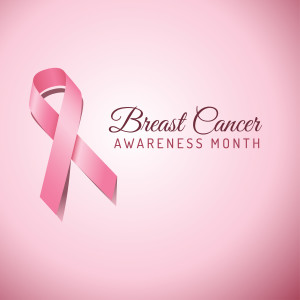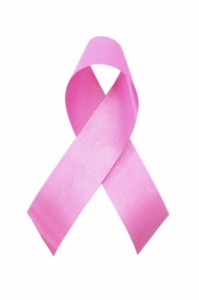
Though the word “mammogram” may ring as scary for many women, it is essentially an X-ray imaging of your breasts to detect a tumor or other abnormalities. There is no suggested or ideal age at which medical professionals agree one should start getting a screening mammogram, but typically women get their first mammogram between ages 35 and 40. Depending on risk level and preferences, women should discuss the options and risks with their doctor.
Remember that getting a screening mammogram does not necessarily mean there is cancer present: even if you get a call back, which is most common in first mammograms, it is most likely to look at a certain area more carefully. An extra ultrasound may be more commonly required in women who are pre-menopausal and get a mammogram done.
Facility Tips
- Choose a facility that specializes in mammograms and conducts a number of them in a day, speaking to its credibility and expertise. To reassure yourself about the standards being met, you may request to see an FDA certificate. If possible, visit the same facility every year so that your record is kept and comparisons may be done easily.
- Get your records from any other facility you may have visited in the past, so the pictures can be compared, and you can save some time.
- Also bring with you a list of places and dates when other mammograms may have been done, as well as biopsies or other breast treatments.
Day of the Mammogram
- Avoid deodorant, cream, or powder under your arms on the day you are scheduled to have a mammogram as those substances may show up as white spots.
- Wear clothes that will make it easy to remove just the top and your bra on the day of the exam.
- Try to schedule the mammogram on a day when your breasts are not swollen, so as to get a better picture and be more comfortable.
The Exam
- Most technologists are women, and you and the technologist should be the ones in the room during the exam. They will position your breasts accordingly for the mammogram.
- Expect your breasts to be compressed between two plates, and the procedure should take about 10-20 minutes, while the breast compression will not be more than a few seconds.
- For a screening mammogram, two views of each breast are required. For women with larger breasts or breast implants, more photos may be necessary.
- There may be some discomfort or pain during the procedure, but you should alert the technologist so they can try and make it more comfortable for you.
Though getting a mammogram does not necessarily mean you have a malignant lump or cancer, you should check with the facility if you don’t hear back from them—until you are certain, you should not assume the mammogram is normal. The best quality of a mammogram is that it can detect breast cancer even if it is too small to be felt; this means that it is diagnosed at a very early stage giving it the best chances at a successful treatment.
More
 The debate on breast care is ongoing with two main schools of thought: those who support the idea that bras are harmful and those who argue that bras are not harmful. Though there may be a gray area, the basic arguments surrounding the effectiveness of bras and their contribution (or not) to breast care seem to fall under these two categories. To help clear up some of the uncertainties, the following bra myths are explained.
The debate on breast care is ongoing with two main schools of thought: those who support the idea that bras are harmful and those who argue that bras are not harmful. Though there may be a gray area, the basic arguments surrounding the effectiveness of bras and their contribution (or not) to breast care seem to fall under these two categories. To help clear up some of the uncertainties, the following bra myths are explained.
Bra Myths
- Bras are Linked to Breast Cancer
This is probably the most common myth that circulates, claiming that wearing a bra increases the chances of developing breast cancer later in life. However, there is no scientific basis for this claim as of yet. According to a 2014 study on 1500 women, there is no correlation between wearing a bra and breast cancer risk. There are other physical and behavioral factors that contribute to the risk of breast cancer, but there is no direct correlation between those and whether you choose to wear a bra or not.
- Bras Stop Breasts from Sagging
When refuting this myth, it is important to consider that bras can rest on many places on women’s chests: some are high, some low, some more to the side, or in the middle, and the fullness changes as you go through your menstruation cycle and other hormonal factors you may be experiencing. As such, the firmness and elasticity of your skin are genetically determined and cannot be fully determined by a product whose use alters day by day. Other factors such as rapid weight gain or loss, as well as smoking may affect the elasticity of your skin.
On the other hand, there are those who claim that wearing a bra will make your breasts sag. As with the argument that a bra stops breasts from sagging, we should remember that—again—elasticity and firmness of skin is genetically determined and behavioral and physical factors may alter it.
- Most Women Wear the Wrong Bra Size
Though this statement may have an element of truth in it, there are no conclusive studies to prove that women make extremely detrimental choices when buying bras. It is understandable that there may be minor mistakes made, such as choosing a design that doesn’t quite fit your body or supports your daily activity habits, but most women will purchases bras that more or less fit their chest area and make them feel comfortable. After all, there is no specific guaranteed that we wear the right bra at any given moment, as our hormones and physical condition (swelling, sweating, sitting etc.) affect our breasts day by day.
As with most other arguments around the safety of bras, some disagree with the idea of wearing a bra in your sleep. There is no scientific evidence to prove that sleeping with a bra on will harm you, and some doctors may even recommend it if your breasts feel sore. If you do choose to sleep wearing a bra, it is recommended that you pick out a lightweight, non-underwire bra. It should not be too tight, neither have parts that dig in as you want to avoid it causing skin/breast irritation or disrupt your sleep.
Takeaway
As with anything else you do for your health, you should make sure that you are comfortable in the bras you choose to wear. Consult your doctor if you experience any persistent or unusual breast pain or if you choose to change your bra habits and are concerned about your breast health.
More
 Last week, actress Julia Louis-Dreyfus announced she has breast cancer in a post on her official Twitter account saying, “1 in 8 women get breast cancer. Today, I’m the one”.
Last week, actress Julia Louis-Dreyfus announced she has breast cancer in a post on her official Twitter account saying, “1 in 8 women get breast cancer. Today, I’m the one”.
According to the National Breast Cancer Foundation, one in eight women in the United States will be diagnosed with breast cancer in their lifetimes. While we have made significant strides in breast cancer treatment options, the safest way to protect yourself from this deadly disease is through awareness and early detection. As we spend the month of October wearing pink ribbons and reflecting on those we’ve lost, and those who have persevered, take the time to familiarize yourself with the latest breast cancer screening guidelines. By following a regular routine of administering self-exams, and receiving recommended screenings from your OBGYN, you will put yourself in the best position to help us continue the fight against breast cancer.
Breast Cancer Screening Guidelines
According to the American Cancer Society, the frequency with which women should obtain a breast cancer screenings from their OBGYN is dependent upon age. More specifically:
- Women ages 40 to 44 are recommended to receive a mammogram annually if desired.
- Women ages 45 to 54 are recommended to receive a mammogram annually.
- Women 55 and older are recommended to receive a mammogram every two years but may continue to receive annual screenings if desired.
Regular Self-Exams
In addition to mammography screenings, women should also perform routine self-breast exams. Regular self-examinations help women ensure they are familiar with their breasts so that if any abnormality develops, they can identify the change and make an appointment to be examined by a doctor.
Family History
Women with a personal, or a family history of breast cancer are recommended to receive more frequent screenings. If your mother, sister(s), or grandmother(s) have been diagnosed with breast cancer, talk to your OBGYN. He/she will help you determine when to start receiving regular mammography screenings, and whether or not an MRI is also advisable to test for abnormalities.
Other Risk Factors
In addition to your family history, your doctor will need to have an understanding of other factors that could increase your risk of breast cancer and that may impact when you should begin receiving breast cancer screenings, and with what frequency. Such risk factors may include:
- Your age. A woman’s risk of a breast cancer diagnosis increases with age, particularly up until age 50.
- Childbearing history. The older a woman is when she has her first child, the greater her risk of developing breast cancer in her lifetime. Women who never have children are also at a greater risk of developing breast cancer.
- Menstruation history. Women are at a higher risk of breast cancer if they menstruated for the first time before age 12 or if they go through menopause after age 55.
- Genetic factors. Women with a mutation in the BRCA1 or BRCA2 genes are at a higher risk of developing breast cancer.
If you have any questions or concerns regarding your personal risk of breast cancer, talk to your OBGYN. He or she will be able to discuss your personal risk factors and will help you to determine a routine screening frequency plan that is right for you.
More
 Americans across the country have embraced October as Breast Cancer Awareness month. Many of us spend the month of October wearing pink bracelets, signing-up for 5K runs, and watching professional athletes incorporate pink gear into their uniforms. Our heightened level of awareness and consideration of breast cancer and research funding is essential to finding a cure, but how many of us spend time in October considering our own health and potential risk for being diagnosed with the disease? This October, continue to wear your pink accessories and donate to your local fundraisers, but in honor of breast cancer awareness month, learn the warning signs and symptoms of breast cancer so that you can remain healthy too.
Americans across the country have embraced October as Breast Cancer Awareness month. Many of us spend the month of October wearing pink bracelets, signing-up for 5K runs, and watching professional athletes incorporate pink gear into their uniforms. Our heightened level of awareness and consideration of breast cancer and research funding is essential to finding a cure, but how many of us spend time in October considering our own health and potential risk for being diagnosed with the disease? This October, continue to wear your pink accessories and donate to your local fundraisers, but in honor of breast cancer awareness month, learn the warning signs and symptoms of breast cancer so that you can remain healthy too.
Signs and Symptoms
Thanks to advances in mammography screenings, most breast cancers in the United States are identified at an early stage before symptoms are visible. Still, not all cases of breast cancer are identified through mammograms, which is why it is important to understand the warning signs so that care can be sought as soon as possible. While symptoms can vary among women, the most common signs include:
- A lump, hard knot, or thickening inside the breast or underarm area.
- Swelling, warmth, redness or darkening of the breast.
- Isolated pain in the breast that does not go away.
- A change in the size or shape of the breast.
- A dimpling or puckering of the skin of the breast.
- A suddenly appearing nipple discharge, or a liquid leaking from your nipple, especially if it appears only in one breast, when no squeezing or pressure is applied to the breast, or if the discharge is bloody or clear, rather than milky.
- Itchy, scaly, or sore skin on the nipple, or a nipple rash.
- Pulling in of the nipple or other breast skin.
When conducting a self-breast exam, pay special attention to the presence of lumps or bumps, but understand that breast tissue is naturally textured, and some women’s breasts have more naturally occurring bumps than others. Look for an even and consistent amount of lumpiness throughout both breasts to determine if what you are feeling is your normal breast tissue, or something you should question. If you do find one isolated area with a solid, hard lump, take note and speak with your OBGYN or primary care doctor. By conducting routine exams on a monthly basis, you will be more in tune with your body in case you have a sudden, newly appearing lump that may be of concern.
When to Seek Care
Contact your OBGYN or primary care doctor if:
- You identify a lump that was not present during your prior month’s self exam or that you know is newly developed.
- You find a lump or a bumpy area on one breast that does not feel similar to your other breast.
- You find a lump or bumpy area on one breast that does not feel similar to the rest of the tissue on that same breast.
It is always in your best interest to seek guidance from a health care professional if you have any concerns about the signs or symptoms listed above. While your OBGYN may tell you that what you’ve found is normal, or that it is a benign breast condition such as a cyst or fibroadenoma, having the peace of mind of knowing that you are healthy will be well worth the exam.
More




